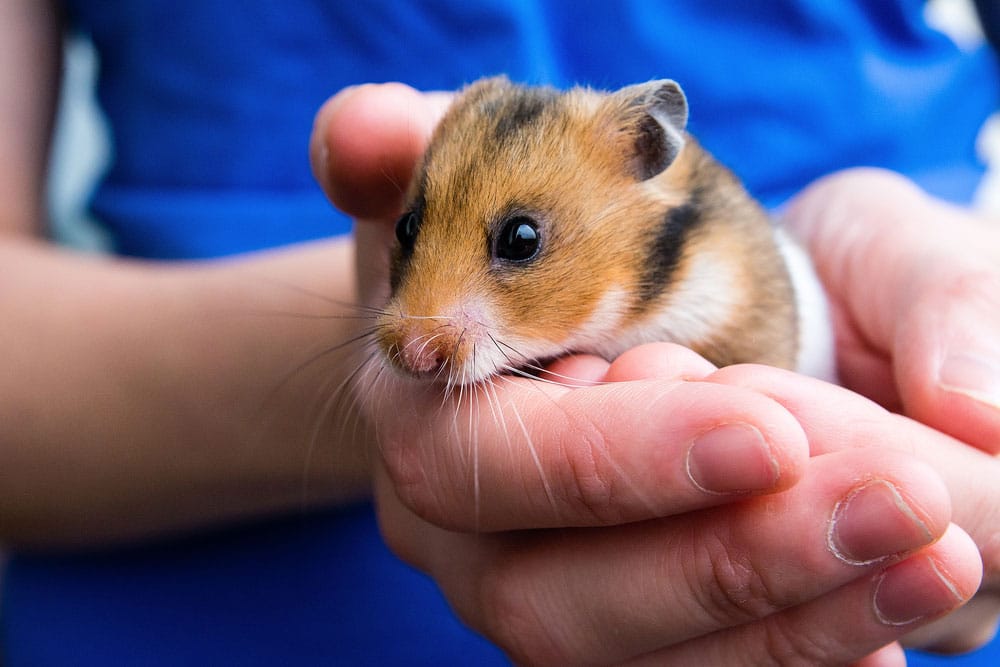Winnebago County Animal Services adopts Hamsters to be family pets. Under no circumstances should a Hamster be used for food for other animals; for experimentation or laboratory work; or for any other use other than as a family pet. WCAS strictly enforces this policy under the terms of the adoption contract.
A hamster’s life span is 2-3 years. It is a must that hamsters be provided with individual housing to prevent probable fighting and to eliminate any possibility of reproduction which contribute to an overpopulation problem. Never keep two male hamsters in the same cage as they will usually fight until one dies. Keeping two females together is also somewhat unpredictable. We strongly recommend one hamster per cage.
Cages and Equipment
Hamsters should be kept in a good quality cage (such as a Habitrail) or an aquarium. Avoid cages with sharp edges. If using an aquarium, it’s advisable to use a locking screen cover. Hamsters can and will escape if given the chance.
You have several choices of bedding to choose from. Recycled paper bedding such as “CareFresh” works well. Pine or corncob bedding works also. Hamsters normally build a nest in the corner of their cage.
A small dish is a necessity for feeding your pet. This keeps the food off the floor. A hamster bottle is needed to provide a constant supply of water. It’s impossible for your pet to pollute its drinking water when you use a bottle. Be sure to periodically clean and sanitize the water bottle.
Food
Feed your hamster daily a good quality hamster food. They also enjoy hamster treats such as honey. Do not feed your hamster vegetables, table scraps, or foods high in sugar or salt. This can cause diarrhea. Alfalfa cubes are recommended as they help keep the hamster’s teeth from growing too long.
Health Care
To prevent disease, it is a good idea to put tetracycline in your hamster’s drinking water. Check your hamster daily for “wet tail”. This is the most common disease which will affect them. If not controlled, it will kill them. To check for “wet tail”, pick the animal up carefully and check for a wetness or running near the base of the tail. If wetness is present, it will remain wet until healed. Isolate the sick animal and check with your veterinarian for recommended treatments. Sanitation is the key to prevent the
Suggestions for a Happier Pet
- Hamsters are very active animals and should be allowed to exercise with ladders, exercise wheels, tubes, etc.
- Handle and pet your hamster daily; they love attention.
- It is important to make sure they are awake before picking them up – startled, hamsters may bite. They will soon recognize their owners.
- Be careful to never drop your hamster while playing with it or handling it.
- Let your hamster sleep during the day; they will awaken around 5:00 p.m. and start to provide quite a show on their exercise wheel.
- With a small amount of care, you will enjoy your hamster for many years.
- Hamsters are recommended as pets for older children. Always supervise the handling of pets by children under 10 years of age.
Source: ARL – Animal Rescue League of Iowa, Inc. 2018 – https://www.arl-iowa.org/
